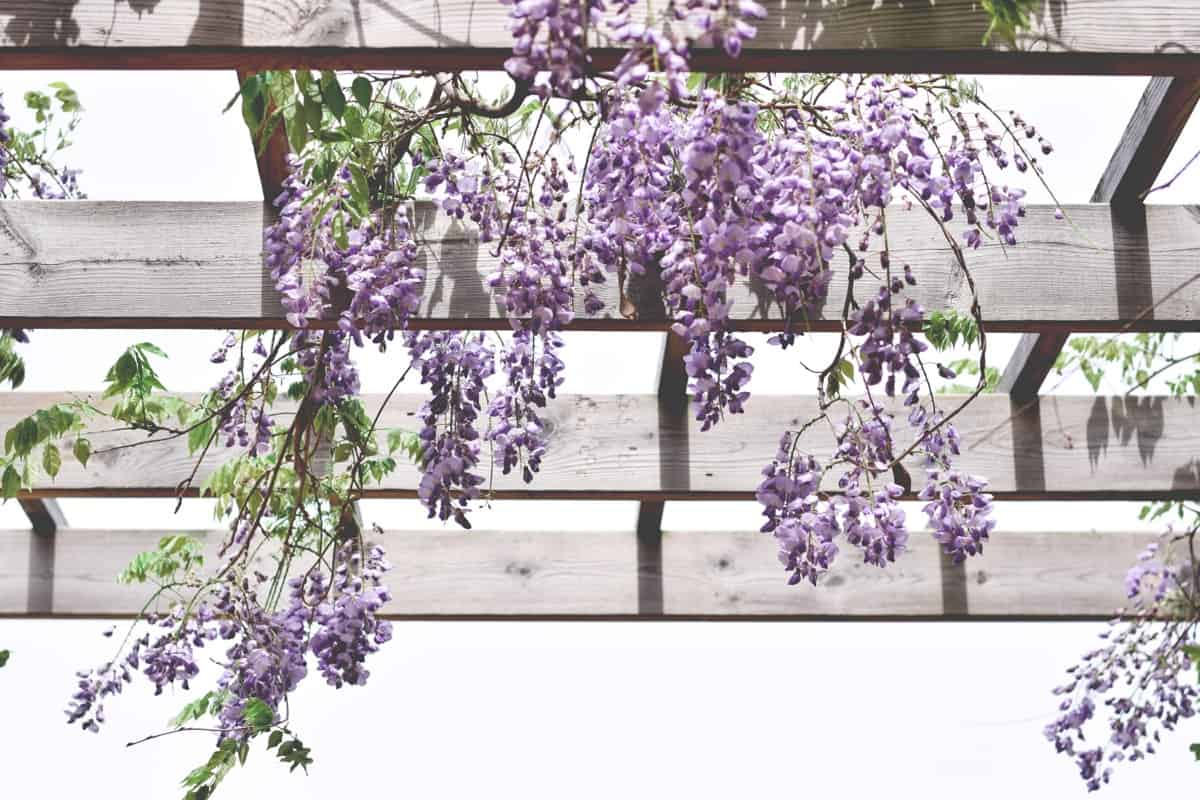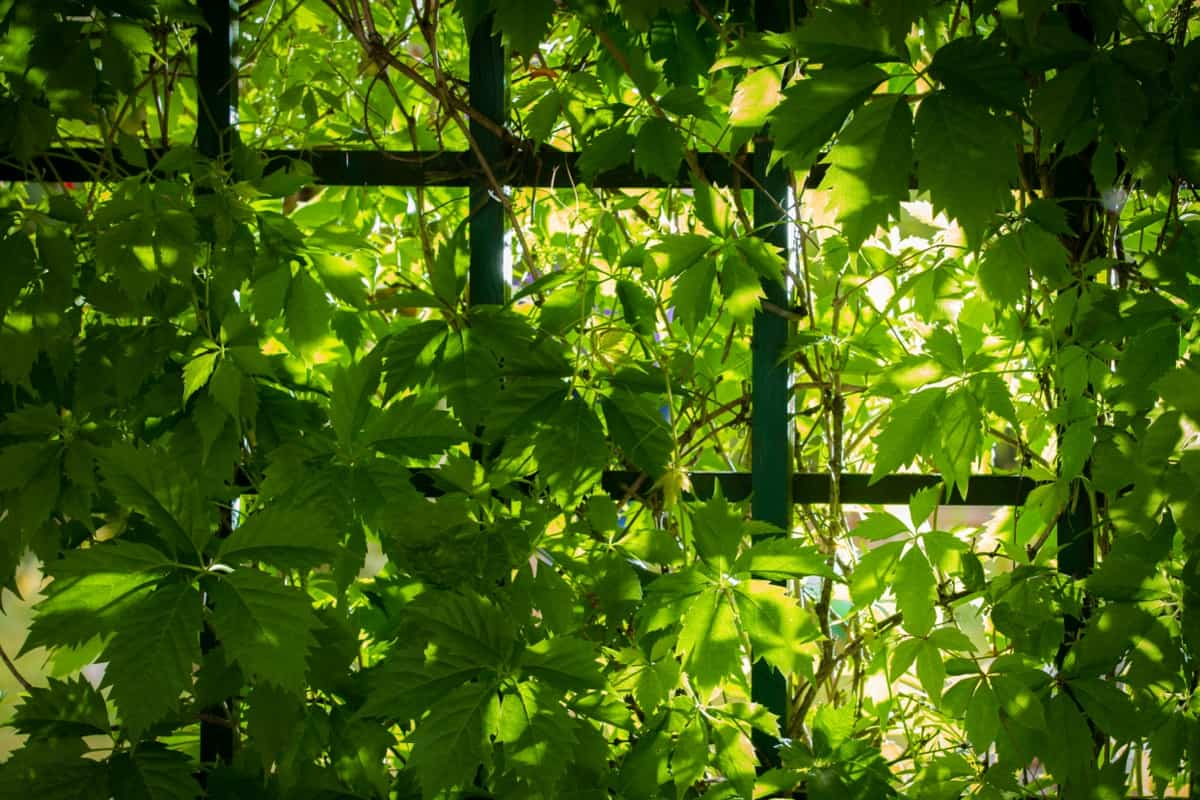Building a Pergola can be fun and rewarding for the backyard homeowner. Pergolas are perfect additions to any landscaping scheme, as they provide shade and privacy while adding an element of style. There are many ways to build a Pergola, so explore different options before settling on one design. Let’s check out how to build a Pergola for climbing plants below. Pergolas are an excellent way to provide climbers with a sunny and sheltered environment.

They are perfect for growing plants and can also be used as a play space for birds or pets. Pergolas are also very versatile, meaning they can be used in various settings, from the garden to the backyard. When choosing a Pergola for your climbing plants, you should consider the size of the Pergola and the variety of climbing plants you will be using it for. A small Pergola can accommodate only a few small climbers, while a larger one can accommodate many different climbers.
Pergolas are also important to choose from based on the climate in your area. If you live where temperatures reach high levels during the day, a Pergola with a strong roof will help protect your climbers from sun exposure. On the other hand, if you live in an area where temperatures stay cool throughout the year, a Pergola made out of lightweight materials may be more appropriate.
In case you missed it: Best and Worst Companion Plants for Peppers – A Full Guide

How to build a Pergola for climbing plants
Advantages of building a Pergola for your climbing plants
- A Pergola is a patio or garden structure made from wood, often supported by columns, and covered with vines or other climbers. A Pergola can also be used as an entryway, seating area, or garden feature. A Pergola can provide comfortable seating, shade, and privacy.
- Pergolas can be the best addition to any climbing garden, providing shade and shelter for plants. Not only do they provide a pleasant environment for climbers, but they also help prevent soil erosion and extend the life of plants. A properly designed Pergola can also attract wildlife, making it a valuable ecological feature in your garden.
- Pergolas offer many benefits for climbing plants, including increased sunlight and air circulation, protection from wind and rain, and reduce pest problems. Pergolas also increase the amount of usable space in a small area by providing a roof over a garden or patio.
- A Pergola can be built from sturdy materials, such as wood, metal, or concrete. The Pergola’s height can be customized to fit the needs of your plants. When planning your garden layout, include space for a Pergola. A well-made Pergola can add years of enjoyment to your plants and flowers.
- A Pergola can provide shelter and a place to grow climbing plants. They provide a nice environment for your plants, and Pergolas are an attractive feature that can brighten up any garden.
Popular Pergola styles
A Pergola attached to the house
A Pergola attached to the house can add a beautiful accent to any home. There are many types of Pergolas to choose from, so you can find one that perfectly matches your home’s style. Pergolas are a popular style of garden structure that can be attached to the house or fence. They add shade and beauty to any yard and can be used for various purposes, including as an outdoor dining area or a spot to enjoy the view. There are many styles of Pergolas, and each one can be customized to fit the needs of your specific backyard.
In case you missed it: Perlite vs Vermiculite: How to Use Perlite and Vermiculite on Garden Plants

Freestanding Pergola
A freestanding Pergola is a great addition to any backyard. This type of Pergola is easy to construct and can be customized to fit your unique needs. Freestanding Pergolas come in various shapes and sizes, so you should choose one that fits your space and needs. There are many different materials that you can use to build a freestanding Pergola. You can choose from wood, metal, bamboo, or plastic. Once you have chosen the material, it is time to start planning the construction of your new Pergola.
On a concrete patio
A Pergola is a style of garden with a concrete patio surrounded by plants and flowers. It is perfect for patios that are not big enough to fit a traditional landscaping scheme or for those who want something unique and stylish. There are many different Pergola styles, so you can find one that perfectly fits your tastes and needs. One popular type of Pergola is the Barrel Pergola.
This style features curved concrete barrels that support vines and flowering plants. The barrels can be painted any color you want, creating an eye-catching focal point in your garden. Another popular type of Pergola is the Italianate Pergola. This style features tall concrete columns that support climbing vines and flowering plants. The columns are usually stained a dark color, which creates a sophisticated look in your garden.
In case you missed it: Best and Worst Companion Plants for Potatoes: A Detailed Guide

Tips for building a Pergola for climbing plants
Choose your location
If you want to enjoy the outdoors but don’t have a lot of space, consider building a Pergola. Pergolas are perfect for small yards and can be built in various styles to fit your needs.
- Consider your neighbors – If you’re considering building a Pergola close to your neighbors, discuss safety precautions and other concerns with them. Ensure the area is clear of any obstructions or hazards that could cause someone injury if they fell from the structure.
- Choose a well-drained Location – A well-drained location will help keep your Pergola in good condition, preventing rotting wood or other damage caused by dampness. If your yard is clay or sandy soil, try to choose an area with good drainage too.
- Consider your structural needs – Pergolas typically use posts and rails made from treated lumber, so make sure the supporting foundation can handle those weights without failure.
- Plan for weather conditions– If you live in an area with high winds or rain, consider those conditions when planning your Pergola layout. Pergolas can easily become destroyed if strong winds knock them over or heavy rains cause them.
Level your building site
Consider building a Pergola if you want to add some flare and interest to your yard or garden. This structure is typically made of wooden boards or columns, with a roof supported by brackets or struts. You can create a very rustic-looking Pergola using untreated lumber, but you can also select more modern materials if you desire. Regardless of the material you choose, it’s important to level your building site before starting construction. This will ensure that the finished product looks symmetrical and balanced.
In case you missed it: How to Get Rid of Mealybugs on Plants: A Full Guide to Home Remedies, Organic and Chemical Control

Once your site is leveled, use a level to draw lines in the ground at each corner of your proposed Pergola dimensions. Make sure these measurements are accurate you’ll need them later when cutting the wood. Now that your site is level and your measurements are accurate, it’s time to start planning your Pergola design. First, determine the size and shape of the structure that you want. Next, decide on the style of roof that you want. And finally, choose from various wood types to create your desired appearance.
Dig the holes for your columns
To build the perfect Pergola for your garden, start digging holes for each of your columns. The hole size will depend on the column size you choose, but make sure they are at least twice as deep as the diameter of the column. Next, line up each column and use a level to ensure they are perfectly aligned.
Pour concrete into your post holes
Pouring concrete into your post holes is a very important step in the construction process of a Pergola. If the concrete is not properly mixed, it will not set and cause problems during the building process. To make pouring concrete easier, use a hose to wet the ground around the post hole before pouring. This will help prevent the sinking of the concrete as it sets. Once you have poured the concrete, tamp it down firmly with a trowel or your foot.
Prepare the posts for your columns
Measure and mark out the locations of the posts. It is important to ensure that the posts are placed at equal distances from each other and the support beams. Cut the posts using a saw or a chop saw. Ensure the cuts are level and smooth on both sides of the post. You can then use a hammer to remove any excess wood around the hole created by the saw. Attach the posts using wire or screws. Ensure the threads are clean and free of dust or debris before screwing them in place.
Secure your columns in the concrete holes
Building a Pergola can add beauty and functionality to your landscape while providing a protective space for plants. Securing the columns in the concrete holes is key to ensuring that the Pergola stands up over time.
- Nailing/screwing into the concrete – It is the Pergola’s most common method of securing columns. You can either nail or screw into the concrete at intervals of 12-18 inches. Make sure you use appropriate fasteners (nails or screws) so that the column does not move and cause damage to the Pergola structure.
- Wrapping with metal cable – Another option is to wrap the metal cable around each column. This will provide added strength and stability to the Pergola and prevent it from rusting over time. Make sure that you measure the circumference of each column before wrapping it with a cable to ensure even coverage.
- Installing brackets– If it is not an option due to space constraints, install a bolt through both sides of each column and hang a weight using a chain or rope system. This will also provide stability for the structure.
In case you missed it: 13 Best Cover Crops for Raised Beds and Why to Use Them

Add your beams
Building a Pergola is the best way to add shade to your yard and create an outdoor space. There are many types of Pergolas, so find the one that is perfect for your needs. To build a Pergola, measure the length of the beam you want to use and cut it to size with the saw. Next, screw the beam together at each end using screws and nails. Finally, attach brackets to either side of the beam and hang the Pergola strings.
Add your rafters
Adding rafters to your Pergola is a great way to make it sturdier and weatherproof. There are a few different ways to add them, so choose the one that works best. Paint or stain the lumber before assembly. This will give it a natural look and help protect it from moisture damage over time. Add finishing touches to the Pergola once it’s complete.
Conclusion
A Pergola is an excellent option if you’re looking to add some extra character and shade to your garden. Whether installing one as part of a new landscape design or just updating an existing one, there are plenty of tips and tricks available on building one yourself. From the wood type to the structure’s size and shape, plenty of information is available on how to make a Pergola that suits your needs.
- Flower Garden Designs and Layouts for Beginners
- Planting and Spacing Techniques in Papaya: A Beginner’s Guide
- Growing Gold: Essential Techniques for Planting Pineapples
- How to Make Kalanchoe Plant Bushy: Home Remedies and Solutions
- 11 Reasons Why Your Gardenia is Not Blooming: Home Remedies and Solutions
- Eco Elegance: The Guide to Designing a Drought-Tolerant Landscape
- Gardening on a Slope: Strategies for Hillside Landscaping
- Nourish and Flourish: Top Organic Mulches for Thriving House Plants
- Everything You Want to Know about Indian Mogra Flower: Discover Uses and Growing
- Green Thumb Success: Expert Tips for Cultivating Greenhouse Pumpkins All Year Round
- Maximize Growth & Flavor: The Ultimate Guide to Companion Planting in Herb Gardens
- How to Control Rhododendron Problems Naturally: Home Remedies and Organic Ways to Fix Them
- Natural Magic: The Remarkable Benefits of Cinnamon for Plants
- Best Steps to Revive Dying Tulip with Natural and Organic Treatment
- 10 Reasons Why Your Angel Trumpet is Not Blooming: Remedies and Treatment
- How to Fix Periwinkle Leaf and Flower-Related Problems: Natural Remedies and Solutions
- How to Fix Zinnias Leaf and Flower Problems: Discover Natural and Home Remedies
- Organic Steps to Induce Lemon Tree Flowers: A Comprehensive Guide
- Bloom Booster: Crafting the Perfect Homemade Bougainvillea Fertilizer
- Optimizing Growth: A Guide to Applying NPK Fertilizer for Potted Plants
- 10 Best Homemade Fertilizers for Rubber Plant: DIY Recipes and Application Method
- How to Boost Female Pumpkin Flowers: Effective Steps for More Flowers and High Yields
- Transform Your Indoor Garden: Top Benefits of Pink Salt for Houseplants
- 10 Best Homemade Fertilizers for Peacock Plants (Calathea): Easy DIY Guide
- Unlock Blooms: 9 Reasons Why Your Potted Chrysanthemum is Not Blooming
- 8 Reasons Why Your Potted Hibiscus is Not Blooming: Fix it with Simple Solutions
- Unlock Blooms: 9 Key Reasons Your Potted Frangipani Won’t Flower
- 10 Reasons Why Is My Ice Plant Not Blooming: Remedies and Treatment
- 10 Reasons Why My Potted Hydrangea Not Blooming: Treatment and Remedies
- 10 Reasons Why is My Wisteria Not Blooming: Remedies and Treatment
- 10 Reasons Why is My Goldfish Plant Not Blooming: Remedies and Treatment
- Maximize Your Space: Ultimate Guide to Balcony Gardening with Grow Bags
- 10 Reasons Why Your Iris is Not Blooming: Remedies and Treatment
- 10 Reasons Why Your Anthurium Plant is Not Blooming: Treatment and Remedies
- 10 Reasons Why Your Aquaponic Plants Are Not Flowering: Remedies and Treatment
- 10 Reasons Why Your Agapanthus is Not Flowering: Remedies and Treatment